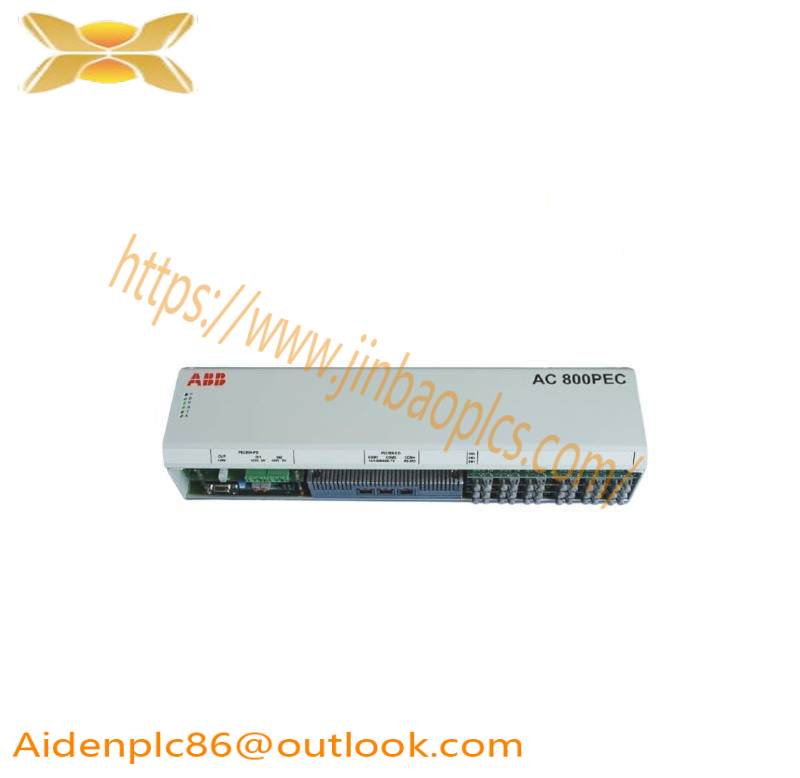PPD513AOC-100440 3BHE039724R0C3D 800 D513 AC 800PEC The high-performance control system for model-based design
Can you imagine a process with a cycle time of less than 100 μs? We can – and we’ve built the AC 800PEC to achieve it,
High-performance applications with extremely fast control algorithms – cycle times that range from 100 microseconds for fast control loops to seconds for long-term operational transients – require specialized control devices.
That is why we have designed the AC 800PEC, extending the capabilities of ABB’s well-known ControlIT automation technology to handle the very high-speed algorithms of processes such as power electronics applications. We’ve even gone a step further: now, a single processor unit combines these high-speed controls with the low-speed process control tasks usually carried out by separate PLC units.
To facilitate the implementation of control algorithms, the AC 800PEC can be programmed using MATLAB® / Simulink® – the code is automatically generated from the model and can be downloaded without manual interaction.
Embedded into a robust and flexible system structure with integrated standard communication, the AC 800PEC is unique in the field of industrial process controllers.
The AC 800PEC, the ultimate approach for high demands
The AC 800PEC provides the unique combination of features required in demanding applications:
− Short cycle times down to 100 μs
− High processing power
− Fast communication and I/O
− Programming tools:
− System engineering with IEC61131-3 languages using ABB’s Control Builder, either as Compact or Professional version
− Product & control development using MATLAB® / Simulink® for model-based design, easily bridging the gap from simulation to implementation
− Full integration into ABB’s System 800xA
− Innovative and flexible use of FPGAs to include protocols and application functionality in the devices without creating additional processor load
− Optical communication
− Industrial grade hardware with no moving parts
− Long life cycle, easy upgrading
Built to control power – in industry, utilities and traction
ABB is a globally active company with full process know-how in a wide field of industrial, utility, traction, marine and other applications. As a result, the AC 800PEC is a key controller for ABB’s own range of industrial applications, and also for third party products and systems.
The AC 800PEC is an efficient and flexible controller family. Thanks to its short cycle times, fast I/O, high processing power and advanced control using MATLAB® / Simulink®, the AC 800PEC:
− Increases process quality and output − Saves development and engineering costs
− Reduces the energy consumption of your products − Shortens time-to-market for your development project
− Saves headcount and resources in engineering and software development − Enhances Return on Assets (ROA)
The modular structure of the AC 800PEC control system means it can adapt to any application size, from the largest industrial plants and propulsion systems down to very compact products where space and cost are critical. All over the world, many thousands of processors are now proving their worth in a wide variety of extremely demanding applications.
Tuned for performance and efficiency
Powerful hardware for efficient high-speed processing
The AC 800PEC combines the floating-point computing performance of the CPU with the flexibility and high speed capability of an FPGA.
The system is separated into three performance levels covering different cycle times. Control tasks are allocated depending on their speed requirements:
− Very fast tasks down to 25 ns
− Fast tasks down to 100 μs
− Slow tasks down to 1 ms
The hardware architecture of the AC 800PEC is an ideal match to the three-level software structure.
To support the short processing cycle times, the AC 800PEC provides a fast I/O system. Depending on the speed of the I/O connection, it is possible to achieve data throughput times below 100 μs – including the time required to read, transmit, process, transmit and write the signal.
Related recommendations:
Honeywell 51197564-200
HYUNDAI AIM16
SIEMENS 6ES5943-7UA12
SIEMENS 6ES7131-0BH00-0XB0
3BHE032025R0101 PCD235A101
PCD231B
PC D231 AC 800PEC 3BHE025541R0101
PCD230 A101 3BHE022291R0101
more……


